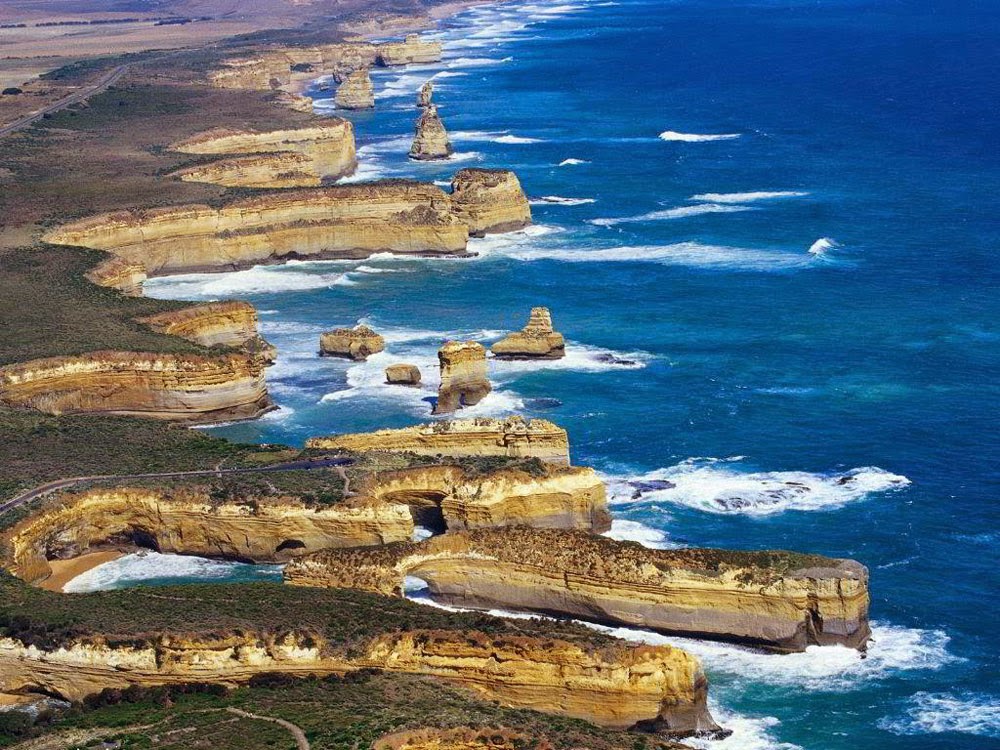The twelve apostles are eroded parts of the South Australian limestone land leading into the Tasmanian Sea in Victoria, Australia. This would provide a far more interesting appearance to the coast than your average beach, and could act as homes to tribes of birds who could nest in the safety of their secluded-ness.
Ayers Rock - Australia
Ayers rock, also known by the aboriginal name of Uluru, is a huge mass of sandstone approximately 350m tall from the ground, and extends even further underground.
Its placing amongst a seemingly barren wasteland surroundings make it look like a location of importance, which is why I would use it as such. Perhaps it could serve as a home and cave system for a tribe of aborigine people, or a place where the great dragon rose from underground. This is an idea I like more, as mixing this sight with a volcano would really help sell it as such a location.
Mount St. Helen's
Though Mount St. Helen's is located in America, having the idea of the dragon burst out of the ground in a scene like a volcano eruption make me think of this particular volcano. Mount St. Helen's erupted in 1980, but it didn't erupt like a normal volcano. Lava blew the north side off the volcano, which removed the upper 1,300 feet (396 meters) of the summit from the previous height of approximately 9,600 feet (3,000 meters) above sea level. Nearly 150 square miles of forest was blown over or left dead and standing.
The sheer force of this eruption and the unevenness of the mountain does make it look as if something has burst out, making it the perfect location for a dragon or huge dinosaur bursting out from underground.
Hot Springs - Greenland/Iceland
These hot springs a pools of water kept warm all year long not due to volcanic activity, as is the case on Iceland, but water is heated by deep layers in the earth's crust rubbing against each other. The Iceland Hot Springs are also interesting though, as those are heated by lava beneath the earths crust, which would scare some enough not to enter the pools.
I think this would be a cool idea for a landmark as it seems so unnatural, but is. It could also suggest the source of the heated island as the heat rises up from beneath the surface, or could by used as warm tunnels underground leading to ancient information about the dragon, with the pools acting as breathing opportunities.





















































